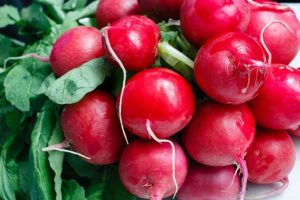After the long cold winter, you must be really excited to be able to work on your organic garden. Nothing feels better than working on your own garden, outdoors in the spring!
As the year progresses, the days are gradually getting longer and warmer. As you get more and more sunshine outside, it makes an ideal time to start working on your garden so it looks better than ever. Spring is the best time for preparing and building your soil fertility. Below we have 5 essential tips for a natural organic garden for spring.
1. Planning:
 It may be too early to start digging and planting but it’s never too late to start planning. Plan for a more productive year and plan your cover crops. Design your garden with raised beds, and objects of attraction that you were missing before. Make your outdoors as attractive as possible, no matter how small or large space you have. You might want to get a backyard pond later on in the spring or summer when the weather warms up, the possibilities are endless! There is no such thing as over-planning in this case so make sure you get all of the details, this way when spring comes you will be ready from the get-go!
It may be too early to start digging and planting but it’s never too late to start planning. Plan for a more productive year and plan your cover crops. Design your garden with raised beds, and objects of attraction that you were missing before. Make your outdoors as attractive as possible, no matter how small or large space you have. You might want to get a backyard pond later on in the spring or summer when the weather warms up, the possibilities are endless! There is no such thing as over-planning in this case so make sure you get all of the details, this way when spring comes you will be ready from the get-go!
2. Manure & Compost:
“Feed the soil, not the plants.” Building healthy soil is definitely rewarding and beneficial in the long run. If you use fertilizers, always use composted organic fertilizers, not fresh manure or chemical fertilizers. Work in your cover crops, and then you can get a layer of topsoil and at least an inch of compost for your raised beds. This will ensure that your soil gets the nourishment it needs for healthy plant growth from rich organic compost. You can buy or make your own organic compost fertilizer if you want, so go find out exactly what your soil needs so you can provide it.
3. Cultivating your soil:
Prepare your soil as much as possible. It’s really important that you spend enough time working on your soil. Melting snow and rain can compact your soil easily. Saturated and compacted soil needs to be broken up. It’s also important that you loosen up your soil as much as possible. Plants grow best when there is air space between particles of soil, so work on your soil when it’s dry enough for tilling. This is another huge element of preparation that you must follow through on for success.
4. Get your potting area ready:
Make a potting area in one corner of your garage, deck, or patio. You’ll just need a table, and some garden tools, that you already have. If you are just starting out, make sure you have all the right tools for gardening. This step is actually really simple, some people think they need other conditions to farm but that is nothing but a misconception, so now you have no excuse, get out there and make it happen!
 5. Order Your Seeds and Plants:
5. Order Your Seeds and Plants:
Order your seeds and select your starter plants ahead of time. Use some online resources to evaluate your area and figure out what will grow naturally in your Zone, this time of the year. Your target should be to work as little as possible and grow as much as possible with the help of natural ecology. It’s often called ecolonomic agriculture, as it’s economically profitable and environmentally sustainable.
P.S: Join our EAT community to connect with people who are making money making the planet better!
Source: Nourish the Planet




